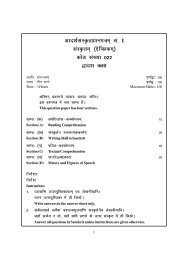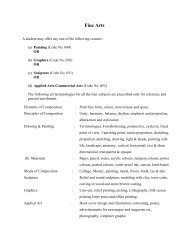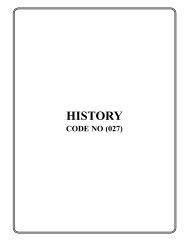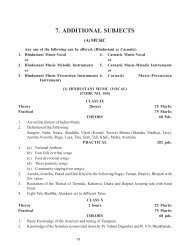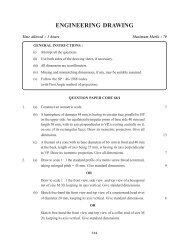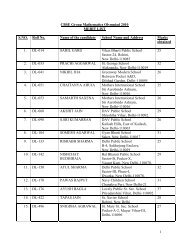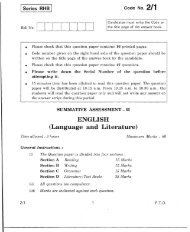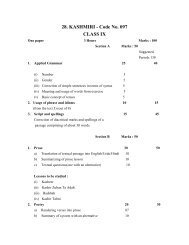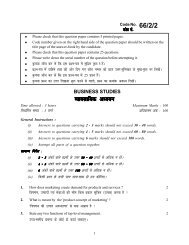A Text Book on Engineering Graphics - Central Board of Secondary ...
A Text Book on Engineering Graphics - Central Board of Secondary ...
A Text Book on Engineering Graphics - Central Board of Secondary ...
You also want an ePaper? Increase the reach of your titles
YUMPU automatically turns print PDFs into web optimized ePapers that Google loves.
ROD JOINTS<br />
SLEEVE AND COTTER JOINT:<br />
Sleeve and cotter joint is used to c<strong>on</strong>nect two round rods or sometimes to c<strong>on</strong>nect two<br />
pipes/tubes. The rods are forged and increased in diameter to some length just to compensate for<br />
the loss <strong>of</strong> material, for making rectangular hole, accommodate the rectangular tapered cotter in<br />
each rod. The ends <strong>of</strong> both the rods are chamfered to avoid burring and easy inserti<strong>on</strong> in the<br />
hollow steel sleeve (socket/cylinder/muff). Both the rods are <strong>of</strong> the same dimensi<strong>on</strong>s. A hollow<br />
sleeve is passed over both the rods and has two rectangular holes for the inserti<strong>on</strong> <strong>of</strong> cotter at<br />
right angle to the axes <strong>of</strong> the rods. The cotters are automatically adjusted due to the extra margin<br />
given for the clearance in the rod and the sleeve. The relative positi<strong>on</strong> <strong>of</strong> slots is such that the<br />
driving in <strong>of</strong> the cotters tends to force the rods towards each other in socket or hollow sleeve.<br />
When sleeve and rods are subjected to axial tensile force then the cotter is subjected to shearing<br />
force, these joints are useful for light transmissi<strong>on</strong> <strong>of</strong> axial loads.<br />
ROD A<br />
SLEEVE<br />
COTTER<br />
SLEEVE AND COTTER JOINT<br />
Fig 4.3<br />
ROD B<br />
ENGINEERING GRAPHICS 111



